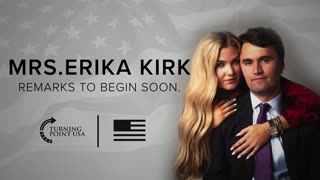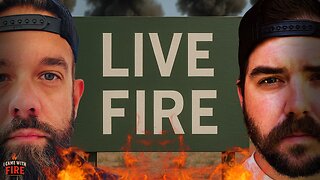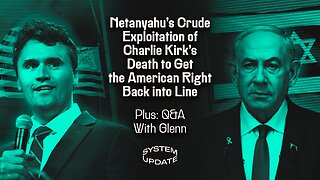Premium Only Content

Honoring Heroes & Victims of 9/11 : Below : VA CHAT GPT CLAIMS INTEL
Copy & Save This Description to help with your claim. I recommend using HILL & PONTON which is Nationwide , but out of Florida. Carol Ponton is the main attorney and they are extremely nice and were unbelievably meticulous with my claim. I started with them in 2019 when I had just gotten to 10% by myself. ( 386 ) 251-5720
After probably over 1,000 back & forth filings between them and the VA & them I just got to 100%
Major rules / concepts that give the VA advantage (with why they matter)
1. Claimant responsibility (38 U.S.C. § 5107(a)) — “You must present and support your claim.”
Why it helps VA / harms claimant: the statute explicitly assigns to the claimant the responsibility to present and support a claim “except as otherwise provided by law.” That statutory language is used to require claimants to produce or point to evidence and lets VA treat a lack of claimant-submitted evidence as a reason to deny or not fully develop issues. It shifts initial evidentiary burden onto the veteran. 
2. Evidentiary record closes at notice of decision (38 C.F.R. § 3.103(c)(2)) — late evidence often won’t be considered.
Why it helps VA / harms claimant: once VA issues notice of a decision the AOJ’s evidentiary record “closes” and evidence submitted after that point is not considered by the AOJ unless it’s part of a supplemental claim and meets the “new and relevant” standard. This gives VA a procedural way to ignore evidence that arrives even shortly after a decision, forcing veterans to file supplemental claims/appeals (with attendant time and complexity). It can be used to limit the material that must be considered at the AOJ level. 
3. Duty to assist with statutory exception — “no reasonable possibility” limit (38 U.S.C. § 5103A and 38 C.F.R. § 3.159)
Why it helps VA / harms claimant: Congress/VA require VA to “make reasonable efforts” to assist in getting evidence, but the duty is explicitly limited: VA need not help if it determines there is no reasonable possibility that assistance would aid in substantiating the claim. In practice that gives VA discretion to refuse steps that a claimant might need (records retrieval, exams) by concluding assistance is unlikely to help — which effectively shifts the burden back to claimants and can be used to avoid development. 
4. VA’s regulatory “duty to notify” (38 C.F.R. § 3.159(b)) and M21-1 screening for “substantial completeness”
Why it helps VA / harms claimant: regulations require VA to notify claimants what is necessary to substantiate a claim, and to screen for “substantially complete” claims. But VA controls the contents/timing of the notice and what it will attempt to obtain — which can create multiple rounds of notices/requests and delays while the claimant responds or waits for VA to act. The “substantial completeness” screening can be used to hold a claim in an incomplete status, which delays the claim start date and development. 
5. Closure of AOJ record + “new and relevant” standard for supplemental claims (38 C.F.R. § 3.2501 / § 3.103)
Why it helps VA / harms claimant: if a claimant wants the AOJ to re-readjudicate they must submit a supplemental claim with new and relevant evidence. “New and relevant” is a high-impact gate: VA only reopens if the claimant brings something the AOJ considers both new and relevant. That restricts remedies and often forces veterans through multi-step appeals rather than having evidence considered on the original proceeding. 
6. VA control of examinations (C&P exams) and the practical weight given to VA exams
Why it helps VA / harms claimant: VA controls ordering and format of Compensation & Pension (C&P) exams and can return/clarify VA exams when they’re insufficient — a flexibility not available for private opinions. Although case law (e.g., Nieves-Rodriguez and others) states private opinions can be as probative as VA exams if adequate, in practice VA exam reports often carry heavy weight and VA can insist on returning/clarifying or requesting additional VA exams — increasing delays and reducing the practical effectiveness of a private medical opinion. That asymmetry can be used to favor VA positions or require claimants to obtain additional documentation to overcome a VA examiner. 
7. Ex parte adjudication model (VA’s internal duty to develop vs. actual practice) — VA is the developer and decision-maker
Why it helps VA / harms claimant: 38 C.F.R. § 3.103 frames proceedings as ex parte and requires VA to “fully and sympathetically” develop claims. But because VA both develops and adjudicates, the agency controls how development is done, what records are sought, and whether development steps are pursued aggressively — enabling procedures/choices that favor government efficiency or risk avoidance over claimant interests. That centralized control can be used to prioritize internal workload and allow systematic delays. 
8. Notice of proposed adverse action / required due-process period (M21-1, 60–65 days / 38 C.F.R. § 3.105)
Why it helps VA / harms claimant: when VA proposes reductions, increases, or adverse administrative actions it must provide a 60-day (practically 65-day) notice period. That protection is intended to protect claimants, but it also establishes a built-in minimum delay for VA action. Additionally, VA procedures let payments continue pending hearings in some circumstances, but the proposal/notice machinery can be used administratively to stretch timelines or institute procedural pauses. 
9. M21-1 procedural rules and internal guidance: broad discretion and limited external oversight
Why it helps VA / harms claimant: the M21-1 manual contains detailed internal procedures that adjudicators must follow. It’s not law, but M21 guidance is controlling in adjudication practice. The manual gives adjudicators discretion about sufficiency of evidence, when to order/exclude exams, and how to weigh evidence. Because M21 is internal policy (complex and frequently updated), claimants often lack clear, accessible guidance outside of VA to challenge procedural choices — producing an informational and procedural advantage. 
10. Treatment of medical records & federal records retrieval limits (fees, inability to obtain some records)
Why it helps VA / harms claimant: VA says it will make reasonable efforts to obtain Federal records but cannot always get records (or will not pay custodial fees). When VA cannot obtain necessary records, the claimant can be left to produce their own evidence, creating delays and costs that favor an agency with record access and create hardship for veterans. There are also regulatory provisions for notice when VA cannot obtain relevant Federal records that can lead to denials if the veteran cannot produce substitutes. 
⸻
Specific procedural “glaring issues” that restrict claimant rights or give unfair VA power
• VA’s discretion to decide there is “no reasonable possibility” the assistance will help — a subjective, hard-to-test standard that can be (and is) used to refuse development such as ordering an exam or obtaining records. This pulls the rug out from under veterans who cannot easily rebut that discretion. 
• Evidentiary record closure and the “new and relevant” gate — the combination means evidence arriving after a decision is effectively ignored unless the veteran restarts procedural steps (supplemental claims/appeals) and proves the evidence is both new and relevant. That procedural gate produces repeated cycles and delays. 
• Asymmetry in practical weight between VA C&P exams and private medical opinions — VA controls C&P scheduling, format, and can demand corrections; private providers must meet evidentiary expectations (and often must review the record) to be considered equal. That creates a de facto advantage for VA-ordered exams. 
• Complexity and internal nature of M21-1 (lack of transparency) — the M21 manual is large, constantly updated and governs adjudicator behavior; its complexity gives the VA internal levers to apply rules variably and makes it hard for claimants to anticipate or contest procedural choices. 
• Time/notice mechanics that can be used to delay (e.g., multiple notices, proposed adverse action periods, return of exams as “insufficient”) — the regulations and M21 afford several formal pause/notice periods; combined with exam returns or “insufficiency” findings, these are often used in practice to lengthen adjudication. 
• The “ex parte” framework with VA developing and adjudicating simultaneously — while protective language exists in the regulations, the practical effect is that VA controls the record and development pace, with limited independent development rights for claimants. 
-
 30:59
30:59
The Charlie Kirk Show
9 hours agoCharlie Kirk's beloved wife, Mrs. Erika Kirk addresses the Nation.
559K1.56K -
 1:53:28
1:53:28
Man in America
17 hours agoLIVE: Assassin Arrested? Civil War? Are We Being Played?? | LET'S TALK
108K125 -
 2:10:33
2:10:33
Badlands Media
14 hours agoOnlyLands Ep. 24: Processing Tragedy, Cancel Culture, and the Next Spark
71.8K28 -
 2:27:53
2:27:53
TheSaltyCracker
10 hours agoGot Him ReeEEStream 9-12-25
290K373 -
 52:11
52:11
Sarah Westall
12 hours agoBread and Circus Keeps you Financially Ignorant – Its Better for the Elites w/ Chris Russo
75.6K8 -
 3:49:08
3:49:08
I_Came_With_Fire_Podcast
18 hours agoFriday Night Live Fire
69.5K6 -
 1:20:39
1:20:39
Flyover Conservatives
20 hours agoFrom Demonic Deception to Divine Direction: Sid Roth’s Radical Encounter With God | FOC Show
71.3K1 -
 2:50:58
2:50:58
Chrissie Mayr
8 hours agoChrissie Mayr Reactions to Charlie Kirk, Liberal Celebrations, and More
62.6K36 -
 1:05:46
1:05:46
AlaskanBallistics
9 hours ago $4.43 earnedRemembering Charlie Kirk
56.7K10 -
 1:23:27
1:23:27
Glenn Greenwald
11 hours agoNetanyahu’s Crude Exploitation of Charlie Kirk’s Death to Get the American Right Back into Line; Plus: Q&A With Glenn on Charlie Kirk's Assassination, Online Civil Discourse, and More | SYSTEM UPDATE #514
221K178